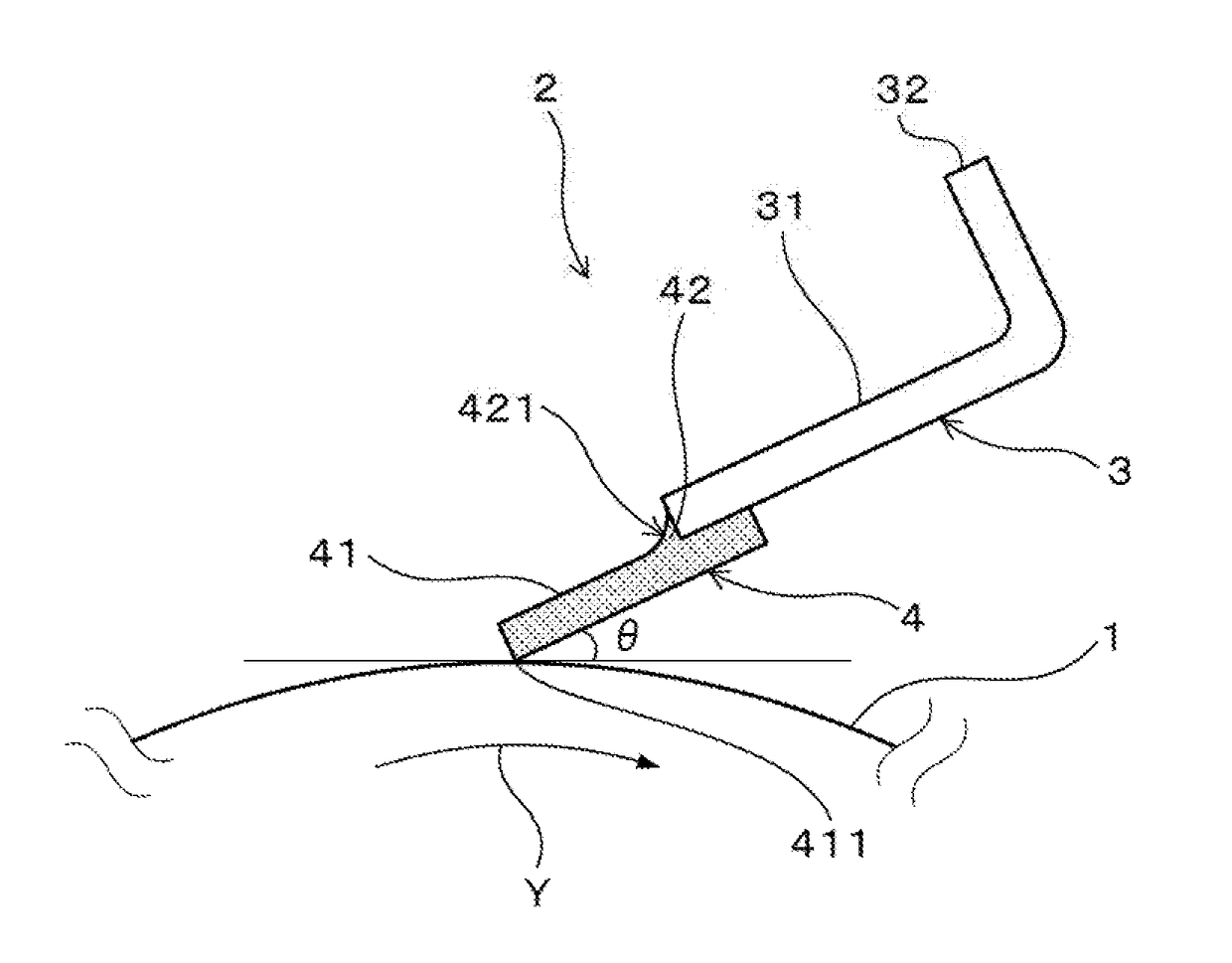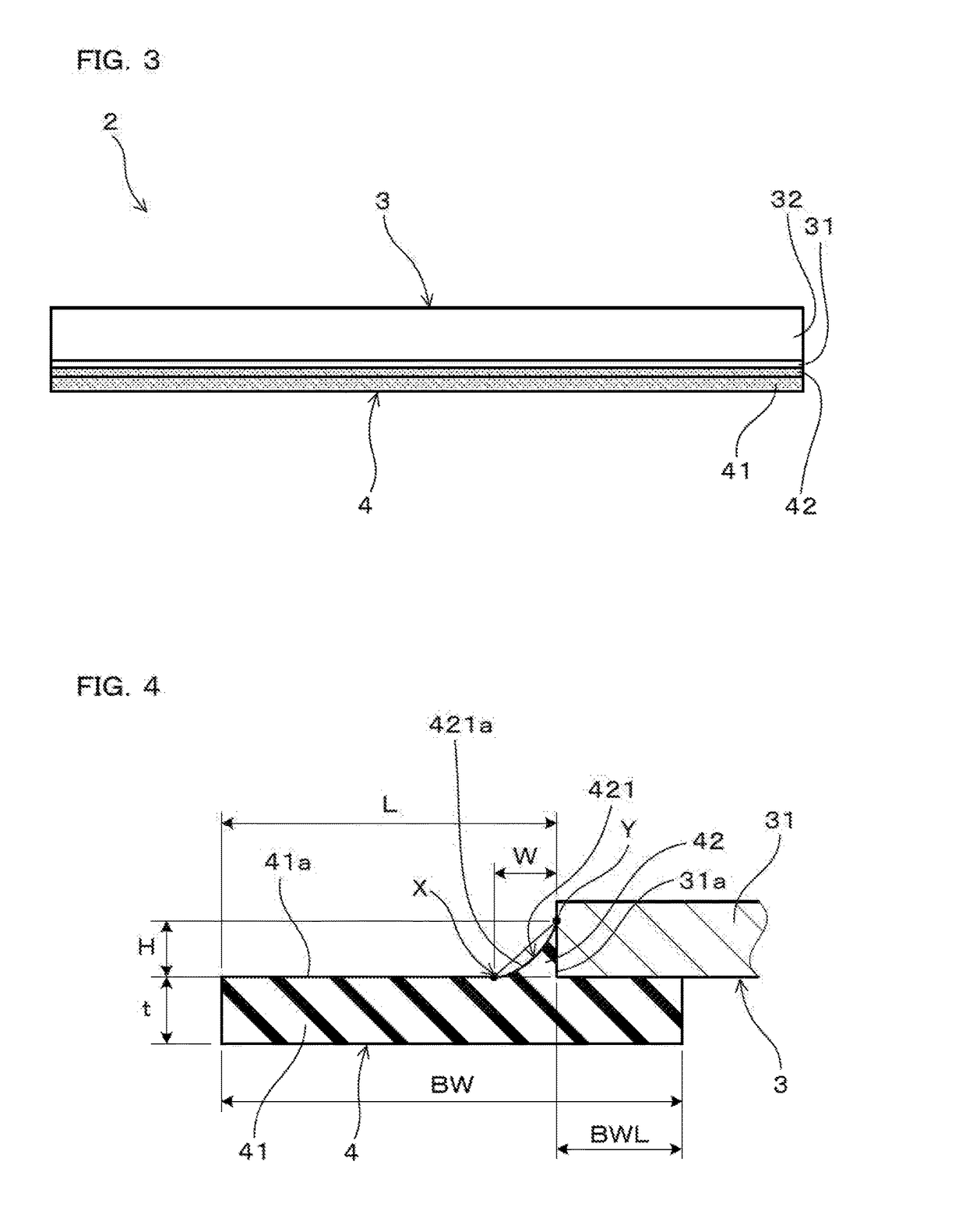Cleaning blade
a blade and blade body technology, applied in the field of cleaning blades, can solve the problems of short contact pressure, curving of the front end of the blade, and toner slipping through, etc., and achieve the effects of enhancing the rigidity of the blade part, and increasing the contact pressure of the blade par
- Summary
- Abstract
- Description
- Claims
- Application Information
AI Technical Summary
Benefits of technology
Problems solved by technology
Method used
Image
Examples
embodiment 1
[0047]A cleaning blade according to Embodiment 1 will be described with reference to FIGS. 1 to 6. As illustrated in FIG. 1, a cleaning blade 2 of the present embodiment is used to remove residual toner (not shown) remaining on a surface of a counterpart member 1 in an electrophotographic image forming device by sliding contact with the counterpart member 1. In the present embodiment, the counterpart member 1 is a photoreceptor drum as an image bearing member. In the cleaning blade 2, a front edge portion 411 on the front end of the blade part 4 serves as a sliding contact portion to be brought in sliding contact with the counterpart member. In FIG. 1, θ represents an abutting angle, and an arrow Y shows a rotation direction of the photoreceptor drum as the image bearing member.
[0048]As shown in FIGS. 2 to 4, the cleaning blade 2 of the present embodiment includes a support 3 including a plate-shaped portion 31 and a blade part 4 made of polyurethane. The blade part 4 is joined to t...
embodiment 2
[0053]A cleaning blade according to Embodiment 2 will be described with reference to FIG. 7. As illustrated in FIG. 7, the cleaning blade 2 of the present embodiment has the blade body portion 41 that is joined to the plate surface of the plate-shaped portion 31 in an inclined manner with respect to the plate surface. The inclination is set in such a direction that the front end of the blade body portion 41 is apart from the counter member 1. The cleaning blade 2 in Embodiment 2 is one example applied to other model different from the electrophotographic image forming device employed in Embodiment 1. Other configurations are the same as those in Embodiment 1.
embodiment 3
[0054]A cleaning blade according to Embodiment 3 will be described with reference to FIG. 8. As illustrated in FIG. 8, the cleaning blade 2 of the present embodiment has the blade body portion 41 that is joined to the plate surface of the plate-shaped portion 31 in an inclined manner with respect to the plate surface. The inclination is set in such a direction that the front end of the blade body portion 41 approaches the counter member 1. The cleaning blade 2 of the present embodiment is one example applied to other model different from the electrophotographic image forming devices employed in Embodiments 1 and 2. Other configurations are the same as those in Embodiment 1.
PUM
 Login to View More
Login to View More Abstract
Description
Claims
Application Information
 Login to View More
Login to View More - R&D
- Intellectual Property
- Life Sciences
- Materials
- Tech Scout
- Unparalleled Data Quality
- Higher Quality Content
- 60% Fewer Hallucinations
Browse by: Latest US Patents, China's latest patents, Technical Efficacy Thesaurus, Application Domain, Technology Topic, Popular Technical Reports.
© 2025 PatSnap. All rights reserved.Legal|Privacy policy|Modern Slavery Act Transparency Statement|Sitemap|About US| Contact US: help@patsnap.com



